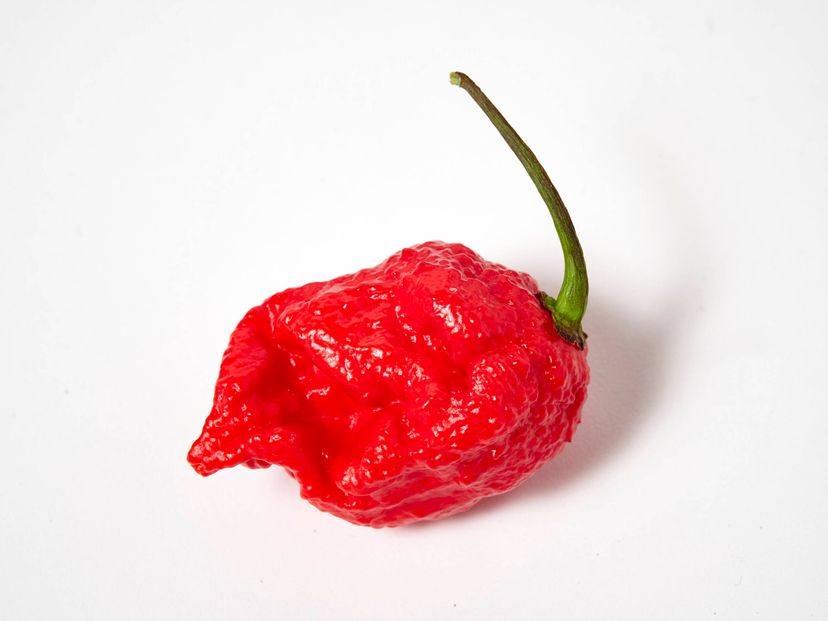
There’s a good chance you’ve come across a way too spicy pepper in your life. Maybe you sought it out; maybe it snuck up on you in a salsa. Either way, that fiery burn is seared in your memory.
But unless you’re an extreme heat seeker, that pepper you tried is far milder than the peppers that reach the top of the Scoville Scale. The Scoville Heat Unit (SHU) is a subjective scale used for measuring the spicy heat of peppers (and other hot foods). It’s a function of capsaicin concentration, though it’s not as accurate as of the actual measurement of the capsaicin content of pepper because it’s assessed empirically by panels of testers.
In ascending order, here’s how the hottest peppers in the world rank. (Fyi, we’ve blown right past the rather tame jalapeño.)
Advertisement
22. Madame Jeanette (225,000 SHU)
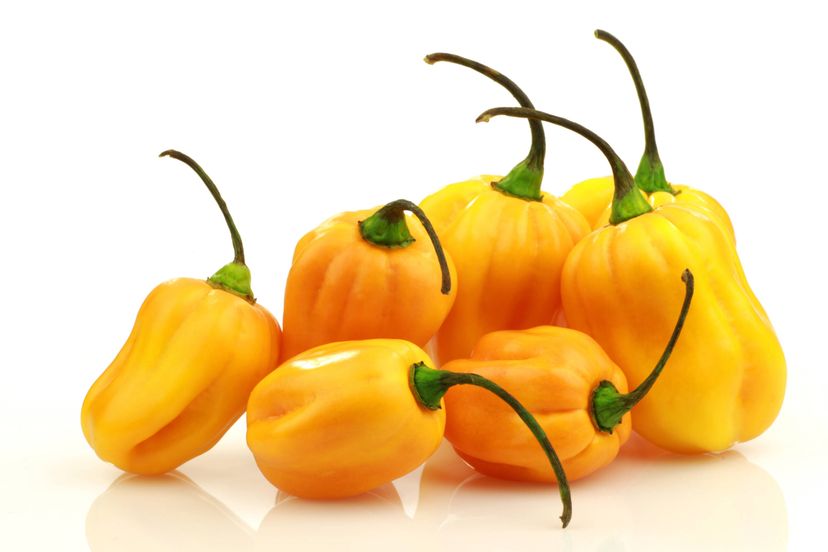
The Madame Jeanette hails from Suriname and is a lovely smooth, yellow pod that packs a surprising punch. Named for a prostitute from Paramaribo, it has neither fruity nor floral undertones — it’s just hot. The Madame Jeanette can commonly be found in traditional Suriname and Antillean cuisine, often tossed into dishes whole to add spice to every bite.
21. Scotch Bonnet (100,000-350,000 SHU)
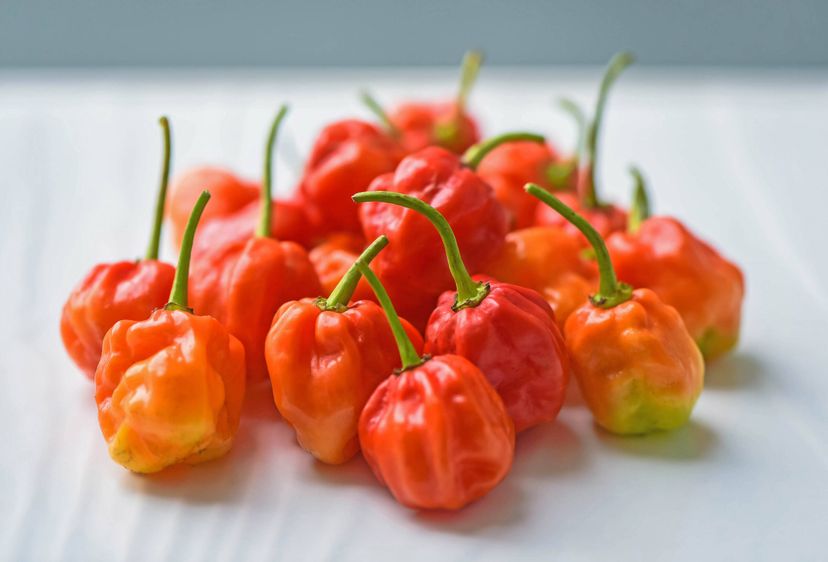
The Scotch Bonnet is a Caribbean pepper, and it gets its name from a perceived resemblance to the Scottish Tam o’Shanter (those floppy plaid hats with the pom-poms on top). It has a little bit of sweetness to go along with all that spicy and is most commonly found in hot Caribbean dishes like jerk chicken or jerk pork, though it crops up in recipes as far away as West Africa. They’re one of the main ingredients in the famous West Indian hot pepper sauces, which differ from country to country but can be found in almost every household in the Caribbean.
20. White Habanero (100,000-350,000 SHU)
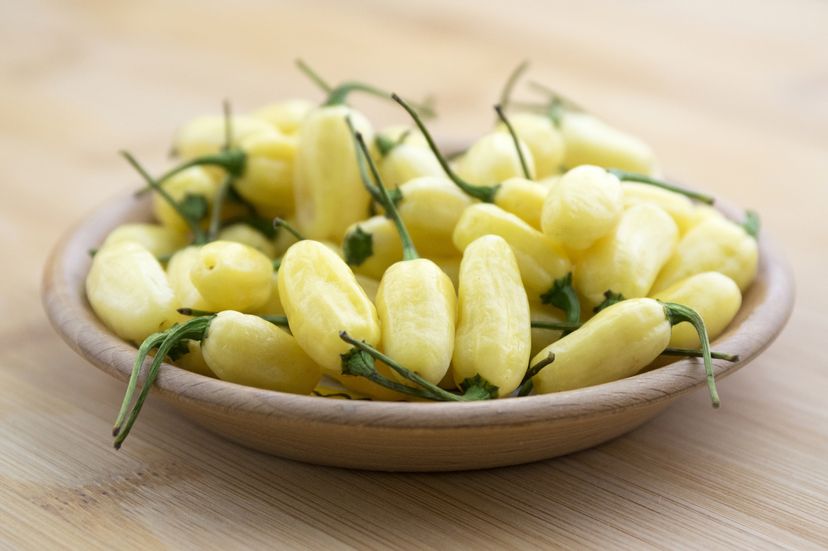
The first of many varieties of the famed habanero to make the cut, the white is particularly rare and difficult to cultivate. These peppers grow on tiny bushes, but each one produces an exceptionally high yield. There’s some debate about whether they originated in Peru or Mexico (some people go so far as to differentiate between Peruvian White Habaneros and Yucatan White Habaneros), but regardless of their origins, these peppers can be found lending heat to traditional Mexican stews and salsas. Their influence has even extended out into the Caribbean, where they’re employed in sauces and marinades.
19. Habanero (100,000-350,000 SHU)
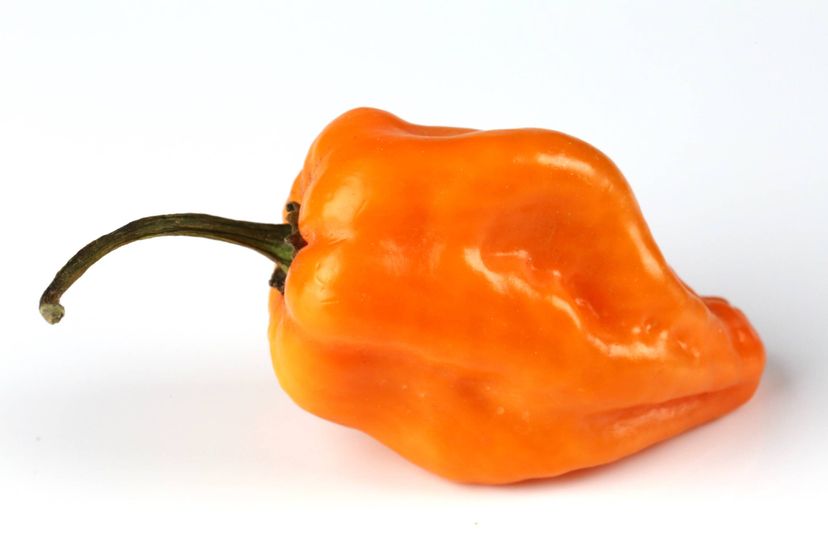
This habanero is the orange kind you can buy in the grocery store, but just because they’re readily available doesn’t mean they’re less vicious than any of their cousins on this list. Originating in the Amazon, this pepper was brought northward through Mexico (where most of them are grown now). The habanero is actually a different variety of the same species as the Scotch Bonnet, though it’s used more in Mexico than in the Caribbean, lending a fruity and floral kick to Yucatanian food.
Advertisement
18. Fatalii (125,000-325,000 SHU)
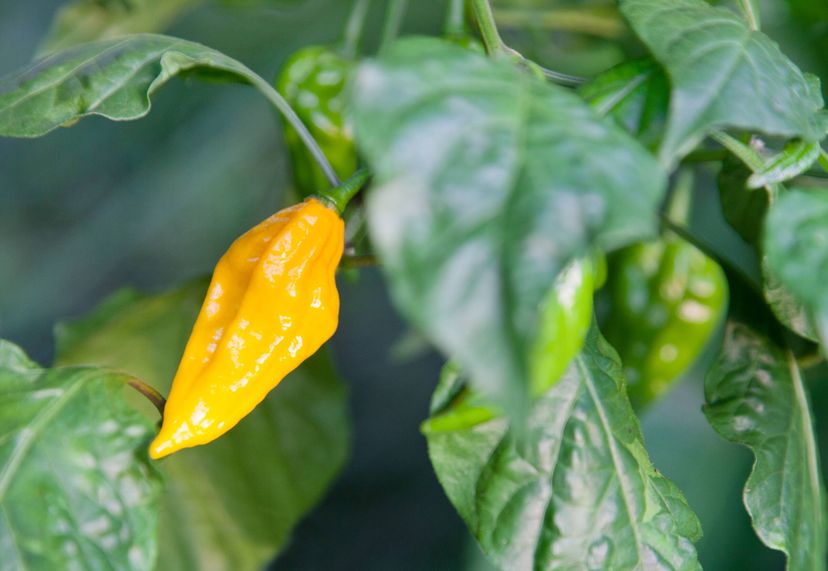
The first pepper on the list from the Eastern Hemisphere, the Fatalii is chili from central and southern Africa. Brave souls claim that its flavor is notably citrusy (though how anybody can taste anything through that much burning is beyond me), and so it’s used largely in fruity hot sauces from its native Africa through the Caribbean.
17. Devil’s Tongue (125,000-325,000 SHU)
Similar in appearance to the Fatalii, and a member of the habanero family, the Devil’s Tongue was first discovered growing in Pennsylvania among its habanero relatives. Nobody’s quite sure where it originated or how it came to be growing in the field of an Amish farmer, but it’s become renowned for its bright, fruity, and sometimes slightly nutty taste. Because its past is a mystery, however, there are no real ‘traditional’ uses for the Devil’s Tongue — experts recommend eating them fresh in salsas or salads if you can take the heat.
16. Tigerpaw NR (265,000 — 328,000 SHU)
This new type of habanero pepper was scientifically engineered, rather than naturally cultivated. The “NR” in the name signifies nematode resistance, as the US Department of Agriculture’s research division (ARS) developed this particular pepper plant to be resistant to root-knot nematodes, a parasite common to many pepper and tomato plants. Because of its distinctly unnatural upbringing, the Tigerpaw, like the Devil’s Tongue, lacks traditional use in cuisine. However, its similarity to the traditional orange habanero means it’s easily substituted in any of the multitudes of habanero recipes used throughout Mexico. (Be cautious: It tends to pack a bigger burn than its more traditional relative.)
15. Chocolate Habanero (aka Congo Black) (300,000-425,000 SHU)
Chocolate Habaneros originated in Trinidad and in fact, have absolutely nothing to do with the Congo. This one’s a favorite of many ‘chiliheads,’ who somehow remain conscious long enough to detect a rich, smoky flavor buried somewhere under all that heat. Chocolate habaneros have been dubbed the “ultimate salsa pepper,” though you’re more likely to find them in world-famous Jamaican jerk sauce.
14. Caribbean Red Habanero (300,000-475,000 SHU)
An upgraded version of the habanero, clocking in at almost twice the spice, this adorably small pepper approaches sinister levels of heat. Like many of the other contenders on this list, the Caribbean Red likely hails from the Amazon basin (though some argue for Yucatan origins) and is a staple in Mexican cooking, where it can be commonly found in salsas and hot sauces. More creative uses of the pepper include a guest appearance in “Caribbean Red Pepper Surprise” ice cream, though, according to one consumer, “The surprise is, your brain is on fire, and your taste-buds are in love, but your fillings have melted.”
Advertisement
13. Red Savina (200,000-577,000 SHU)
Yet another habanero cultivar, this bad boy’s been selectively bred for generations to produce larger, heavier, and spicier fruit — to give you some idea of where this list is headed, the Red Savina was the hottest pepper in the world from 1994 to 2006, and we’re not even halfway through. As a close relative of all the habanero peppers, the Red Savina shares the well-established Central American origin story but was developed further in California.
12. Naga Morich (aka Dorset Naga) (1,000,000-1,500,000 SHU)
Naga Morich means “serpent chili” in Bengali. Sister of the famed Ghost Pepper (yet to come), this beauty is native to northern India and Bangladesh, where it’s often eaten green (read: unripe) and raw, as a side dish. The Dorset Naga is a particular strain of the Naga Morich pepper that was selectively bred for maximum heat — the first pepper on earth to break one million SHU (double the rating of the Red Savina). Aside from mind-numbing heat, they also boast a fruity flavor; some claim to taste notes of orange and pineapple, but personally, I find the idea of being able to taste anything amidst the mouth-fire highly suspect.
11. Trinidad Scorpion CARDI (800,000-1,000,000 SHU)
The Trinidad Scorpion gets its name from its homeland and its appearance; its Trinidadian origins are self-evident, as is the rest of it, once you get a look at one. They have a little stinger opposite the stem, which looks like the poisonous barb on the tail of a scorpion. The “CARDI” addendum stands for Caribbean Agricultural Research and Development Institute, the research group responsible for the breeding of this particular pepper. We’re now well within the ‘dangerously hot’ range, a fact further evidenced by the two main uses of the Trinidad Scorpion CARDI: firstly, in military-grade mace, and secondly, mixed in with marine paint to prevent barnacles from growing on the bottoms of boats. But I guess you could put it in your food if you really wanted to.
10. Bhut Jolokia Chocolate (800,000-1,001,304 SHU)
The Bhut Jolokia (aka Naga Jolokia) is more commonly known by its Americanized name, the Ghost Pepper. The chocolate variant of this pepper is a very rare naturally occurring permutation of the standard red and is named not only for its rich coloring but also for its notoriously sweet flavor. Don’t be fooled by the sweetness, though — it’s just as spicy as its red cousin, at over a million SHU. Native to India, the Ghost Pepper is responsible for some of the most brain-searing, tongue-sizzling curries and chutneys in the entire world. However, it’s also used in military weapons and smeared on fences to ward off stampeding elephants.
9. Bhut Jolokia (aka Ghost Pepper) (800,000-1,001,304 SHU)
There’s not much to be said here that hasn’t already been covered in the section about the Chocolate Ghost Pepper. The standard red variant of this pepper is much easier to find than the chocolate and is the fuel for restaurant challenges and idiotic YouTube videos worldwide. Fun fact: The Ghost Pepper is an interspecies hybrid between the species containing all of the habanero cultivars and the species containing the Tabasco pepper (of taco-sauce fame).
Advertisement
8. 7 Pot Chili (over 1,000,000 SHU)
The 7 Pot Chili gets its name from its alleged ability to provide enough space for seven pots of stew, and at over a million SHU, I’m inclined to believe it. Unsurprisingly, this little demon is also from Trinidad, where evil peppers grow like weeds, and you’ll find it in many of the same dishes as the other Caribbean peppers in the habanero family — stews, marinades, and hot sauces. The 7 Pot (sometimes called the 7 Pod) displays all-over “pimpling,” a texture only found in the spiciest of peppers (appearing as though they’re boiling themselves from the inside out).
7. Gibraltar (aka Spanish Naga) (1,086,844 SHU)
The Spanish Naga is grown, of course, in Spain but was actually developed in the UK. Like the 7 Pot, this one’s so fiendishly spicy that its skin is bubbling and wrinkled, an effect probably exaggerated by the unique conditions under which it’s grown: The plants have to be kept indoors in enclosed plastic tunnels and subjected to blisteringly hot temperatures in order to churn out peppers that spicy. Since they’re largely man-made, there aren’t any traditional dishes that use the Gibraltar chili, but they’re available in Western Europe if you’re interested in concocting a curry and then never tasting anything again for the rest of your life.
6. Infinity Chili (1,176,182 SHU)
Most of the rest of the peppers on this list have been engineered by humans. I guess once we identified the hottest pepper in the world, all we could do from there was make them hotter ourselves. The Infinity Chili was engineered in the UK by breeder Nick Woods, but it only held the world record for two weeks before it was ousted by the next contender, the Naga Viper. Like the previous two, this pepper is red and wrinkly and shriveled and horrible looking — as would you be after eating it.
5. Naga Viper (1,382,118 SHU)
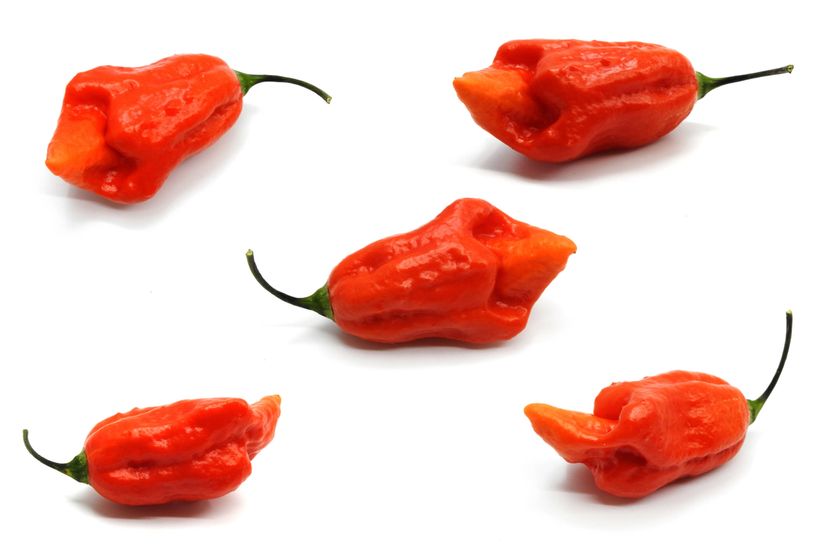
Nature never intended this pepper to exist. It’s so strange, so very unholy in its spiciness, that the plants can’t actually produce offspring exactly like the parent. Okay, fine, it’s not because it’s an evil abomination — it’s an unstable three-way genetic hybrid between the Naga Morich, the Bhut Jolokia, and the Trinidad Scorpion, which can’t naturally incorporate the genes from all three breeds into its seeds. If you want to grow it, you have to get the seeds from its human creator, Gerald Fowler (and the waiting list is several thousand people long).
4. 7 Pod Douglah (aka Chocolate 7 Pot) (923,000-1,853,396 SHU)
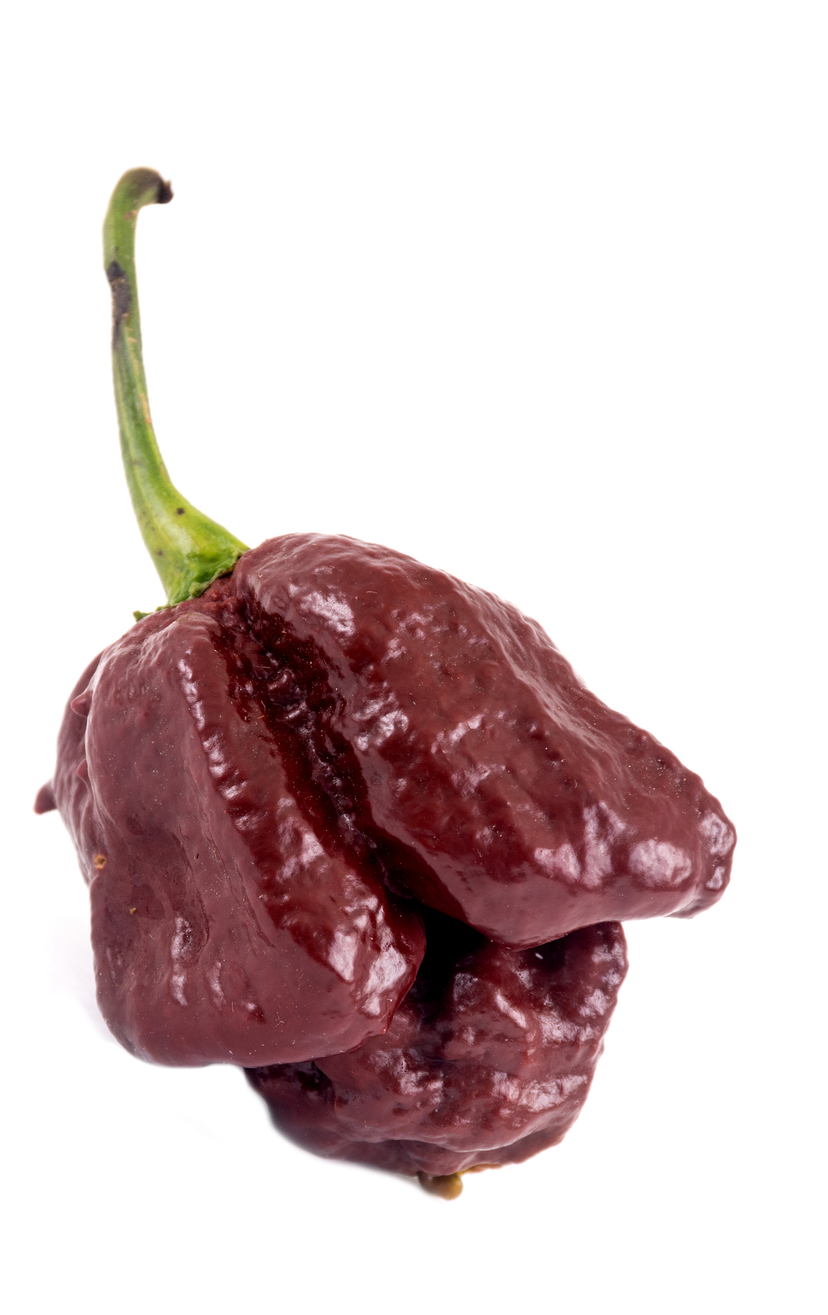
The mean sister of the 7 Pot Chili, the Douglah (also known as the Chocolate 7 Pot) is characterized by heavily textured dark brown or even purple skin. This pepper comes agonizingly close to 2 million SHU — so one would imagine flavor is the last thing anyone’s thinking about as they’re lying on the floor, weeping — and yet, many say the Douglah is one of the most deliciously flavorful peppers, with a full-bodied fruitiness unmatched by others of its spice level. Hailing from Trinidad, land of the brutal pepper, this variety can be found in many of the same dishes as the other Caribbean contenders.
Advertisement
3. Trinidad Scorpion Butch T (1,463,700 SHU)
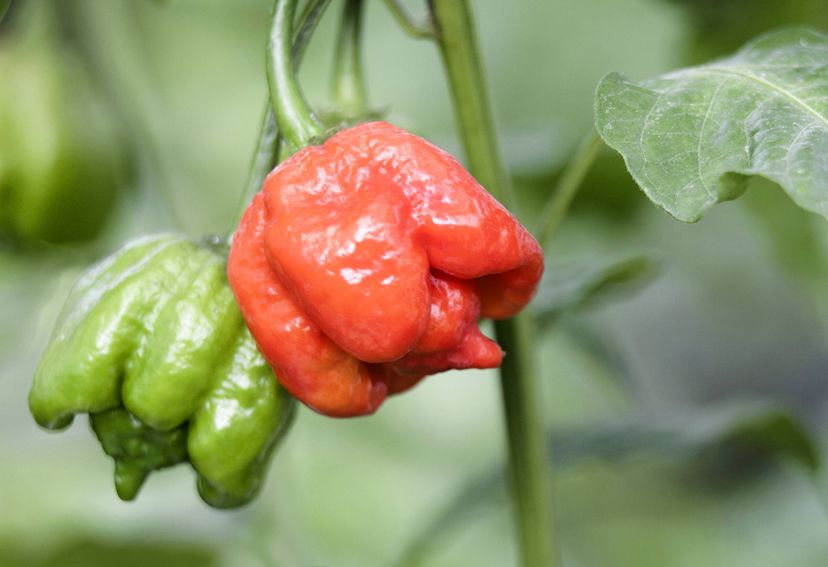
This cultivar of the Trinidad Scorpion is the pride and joy of Butch Taylor, owner of Zydeco Hot Sauce in Mississippi. Tiny, red, and sinister, this pepper has a little stinger on the end, characteristic of the scorpion peppers. The Scorpion Butch T is so spicy you have to wear safety gear to cook with it (that means masks, gloves, full-body suits — the works), and cooks have claimed numbness in their hands for up to two days afterward.
2. Trinidad Moruga Scorpion (2,009,231 SHU)
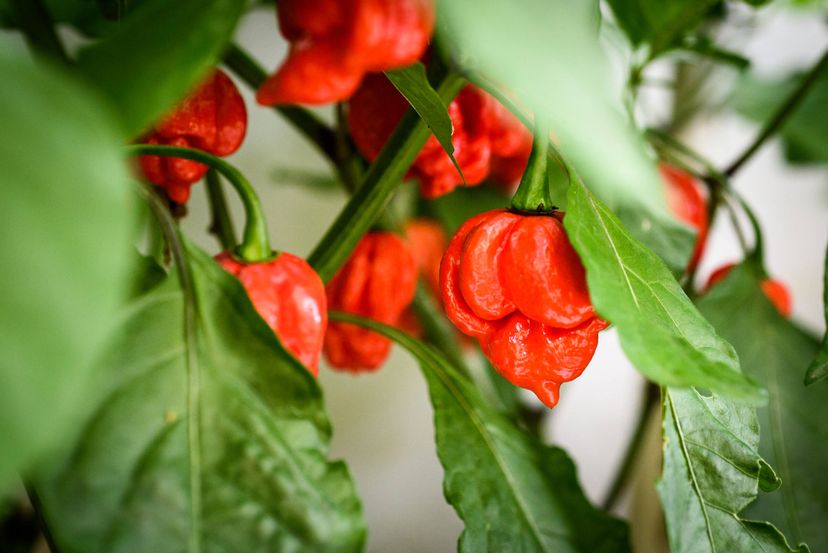
The Moruga Scorpion, the first pepper ever to break 2 million SHU, held the world record for spiciness for several years and hails from, you guessed it, Trinidad. Each fruit is about the size of a golf ball and contains as much capsaicin as 25 milliliters of police-grade pepper spray. This is the spiciest naturally occurring pepper known to man, but, like the Douglah, it’s also famously fruity and flavorful. Fans recommend adding a small amount to any dish for an explosion of flavor, as well as the endorphin rush that accompanies the consumption of something that spicy.
1. Carolina Reaper (1,569,383-2,200,000 SHU)

This is it. The big one. The grand emperor of spicy peppers. The Carolina Reaper claimed its crown in November of 2013 as the spiciest pepper of all time, blowing the Moruga Scorpion’s measly 2 million SHU away by over 200,000 units. And it’s one nasty-looking pepper, fully equipped with the texture and scorpion tail of the Trinidadian heavyweights, though it lacks the natural heritage of the Moruga Scorpion. The Reaper was engineered in South Carolina by Ed Currie, owner of PuckerButt Pepper Co. They have a whole line of Reaper-based merch available on their website if you’re brave. Personally, I like the taste of food, so I have to pass. What can I say? I fear the Reaper.
Advertisement